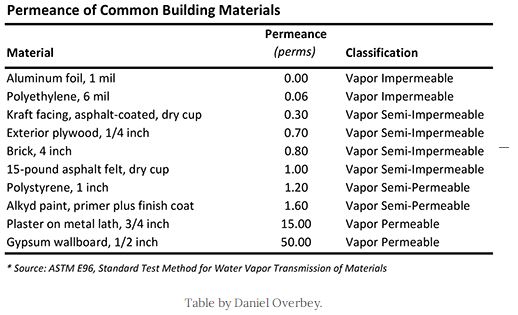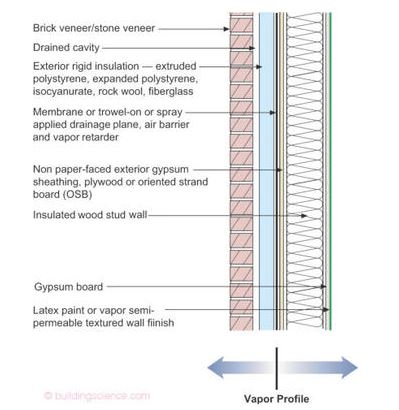Don’t you wish your home could be called a “cleanroom”? Well–maybe in name, but it takes a lot of expensive equipment and protocol to make it happen! Cleanrooms were first invented by scientist Willis Whitfield while he worked at Sandia National Laboratories in New Mexico in the early 1960’s. He developed the first forced-air filtration system to control the number of airborne particles within an enclosed space. (The History and Innovation of the Cleanroom)
A cleanroom is a controlled environment that filters pollutants like dust, airborne microbes, and aerosol particles to provide the cleanest area possible. Cleanrooms are used for many different purposes; some examples are in electronics manufacturing, medical equipment and pharmaceutical manufacturing, research labs, and hospitals. There are nine “classes” of cleanrooms according to ISO 14644-1, which regulate the maximum number and size of particles, air change rates or airflow velocity, and percentage of ceiling coverage. (Cleanroom Classifications) For example, Class 1 is the “cleanest” and only 0.35 particles per m3 of ≥0.5 micron particles are allowed, the air change rate must be between 360 and 600 times per hour, and airflow velocity ranges between 60-100 feet per minute, among other regulations. In contrast, typical office building air contains from about 15,000 to 30,000 particles (0.5 microns or larger) per cubic meter of air. (A Basic Introduction to Clean Rooms) We’re talking mega-fans, filters and restrictions to turn an office into a cleanroom!
Why must cleanrooms be so…extreme? Well, dust is a big problem for certain products. In the case of pharmaceutical products like syringes and medications, airborne particles provide a ride for microorganisms on which to produce, leading to contamination of product. (Keeping Clean Rooms ‘Clean’) Other surfaces like electronics are very sensitive to contamination by dust, and dust or microbes can wreck many scientific experiments.
The biggest contamination risk to a cleanroom and its products is people. Did you know that when you are just sitting or standing completely still , the average person is releasing up to 100,000 particles per minute which are 0.3microns or larger? Increased activity increases these numbers, so people in the cleanroom are encouraged to move slowly (no fast walking or running, and definitely no horseplay is allowed!)
In order to keep the cleanroom, ahem, clean, people entering must follow certain common rules, of which here are some examples:
- No personal items such as watches, keys, or phones may be brought in because of the risk of bringing in other contaminants with them.
- No eating, smoking or chewing gum in the cleanroom.
- No cosmetics such as perfumes, lipstick, nail polish or makeup are allowed because many cosmetics contain sodium, magnesium, silicon, calcium, potassium or iron, which can create damaging particles..
- Don’t enter if you’re unwell–germs are definitely not welcome in the cleanroom, and frequent coughing or sneezing expels many more particles into the air than normal.
- Fabric or paper towels are not permitted! (They shed too many particles.)
- Hair and facial hair must be covered up, because human hair is many times larger than permitted particles in the cleanroom.
Of course, dressing to go into a cleanroom is a production. One suggested procedure lists 42 different steps to put on the white “bunny suits” that are made of a special lint-free material! You must remove offending items from your pockets, wash off makeup or perfume, drink some water to rinse particles from your throat, clean your shoes and put on booties first, then move on to putting on the suit, helmet, faceshield, gloves, belt, and cleaning any equipment you take with you.
To remove all the particles generated by people and manufacturing processes, detailed engineering and specification of the ventilation system is required. Designers may start with the classification of the cleanroom and the required “air changes” for the size of room. Then, they must factor in the number of people, type of work, lighting, and outside ventilation required. For example, if hazardous fumes are developed, then the cleanroom needs to be able to filter and provide 100% outside air! Humidity and temperature inside must also be specified and controlled. The filter size and type must be adequate to handle the particle load for reasonable filter life, as well. These are just some of the details that go into cleanroom ventilation design. (HVAC Cleanroom Design Calculation Explained) This is way more intensive than your basic home HVAC design!
The “envelope” of the cleanroom, or its air circulation boundaries, are very important. By implementing a positive or negative pressure in the cleanroom, the flow of air and contaminants are controlled. Positive pressure cleanrooms are better at keeping outside contaminants out, such as for semiconductor manufacturing, because air rushes out of the room whenever a door is opened. Negative pressure cleanrooms are designed so that fumes and particles generated inside it don’t escape (like for a hazardous microbe research facility). For this reason, special air-sealed doors are often used so that an “air lock” is created and entry/exit is tightly controlled. Sliding and swinging doors must also open slowly in order to avoid disturbing pressure gradients inside the room. (Understanding Air Pressure In Cleanrooms)
The other major concern in cleanrooms besides dust is static charge. Not only does dust itself carry static, people generate static charge when they are walking or working, as their clothes rub together and across certain surfaces. Did you realize that walking over a carpet can generate 35,000 volts, and the human body feels a shock when the voltage is higher than about 3,500 volts? (Static Electricity) Sensitive electronics can be damaged at voltages far below 3,500 volts. For this reason, most cleanrooms are equipped with ionization equipment (similar to HypoAir’s Bipolar Ionization, actually) that disperse ions into the air so that positively or negatively charged surfaces are changed into neutral surfaces very quickly. Ionization equipment may be installed in the fans, or attached to rods and beams that are suspended in the room. Airflow and ionization are designed together in order to deliver the ions to work surfaces in the least amount of time, thus neutralizing charges quickly before they build up and cause damage.
Even with all this technology of filtration and ionization, extreme manual cleaning is still required in cleanrooms. This checklist of cleaning suggests mopping the floors, vacuuming the walls, wiping down all surfaces and cleaning all windows before every shift/between shifts. Wow! That’s truly the kind of clean you can “eat off of”.
So…how do the principles of cleanrooms relate to our own homes? Of course it would be nice to live in a space with so little dust and germs, but it’s just not practical, nor comfortable–homes just would not be homes without eating, cooking, good smells, playing games, pets, comfy soft materials and many more activities and things! However, there are definitely some things to learn from cleanrooms.
- Watch what you bring into the house! In our article “Check them at the door! ”, we explain how to bring how to bring less contaminants into your house by taking your shoes off (and having a place to store them), getting a good doormat, and manage pets that bring in contaminants. It also helps to get a floor cleaning tool that you will use often. I absolutely love using my CrossWave floor and area rug cleaner by Bissell ($257); it’s cut my floor cleaning time in half by vacuuming and mopping at the same time. If you check local discount stores, there are many reconditioned models that sell for less than half this price (I got mine at Ollie’s). In addition, of course the manufacturer wants you to use their patented floor cleaner, and states that using any other cleaner will violate the warranty. Unfortunately, Bissell products mostly rate an “D” grade from the Environmental Working Group for toxicity to humans and the environment, but if you do decide to substitute a non-toxic cleaner, we have just the one for you: TotalClean. With no fragrance and no toxicity, you can clean your floors as often as you want without adding more VOCs and chemicals to your home.
- Use the best filtration you can afford to cut down on dust and microbes in your air. Obviously you don’t want the constant whir of ventilation or to change 14 filters a week like cleanrooms, but using a MERV 12-13 filter in your HVAC and changing it regularly will help minimize breathing in particulates. If you live in an urban or dusty area, add standalone HEPA filters to your home.
- Use Bipolar Ionization to control dust, microbes and static too. Cleanrooms depend on ionization to control static charges, but they also benefit from the other effects of this technology: ions help the filters to grab more dust and ions disable microbes like viruses and bacteria. Our Germ Defender, Upgraded Air Angel Mobile and Whole Home Polar Ionizer each send out millions of ions into the air to do the same thing in your home.
- Try to keep the cleaning on schedule. We know, life gets in the way of routine a lot of times. However, when the cleanroom doesn’t get cleaned on time, things start to go awry, and when your home suffers from cleaning neglect, your own health could suffer for it! Enlist help, reward yourself, do whatever it takes to keep the dust and germs at bay, because a clean home is really a dose of good medicine for your own body!













